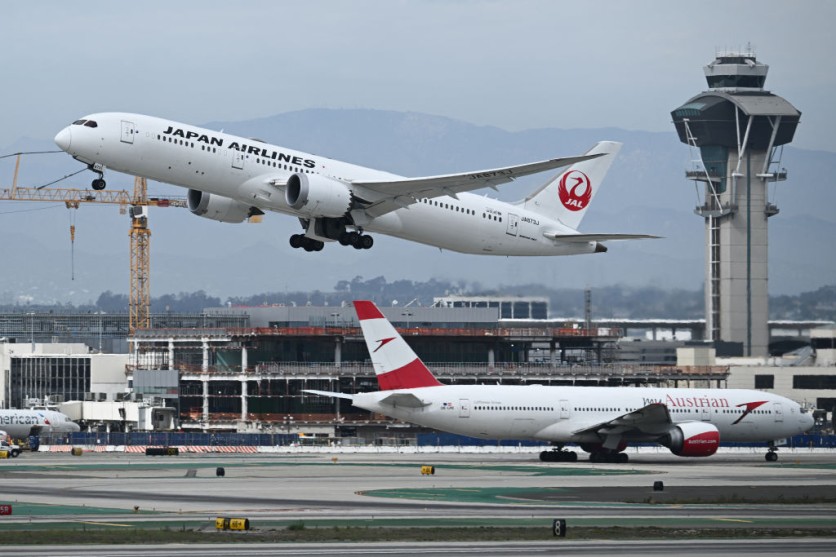A former Boeing engineer has reportedly claimed that certain planes from the aircraft giant, specifically the 787 Dreamliner, could fall apart while flying.
Boeing denies the claims, but an investigation is already underway by the Federal Aviation Administration.
In conversations with The New York Times and documents submitted to the Federal Aviation Administration, the engineer who worked on the aircraft, Sam Salehpour, described his claims in detail. An F.A.A. spokesperson acknowledged that the agency was looking into the claims but would not comment further.

(Photo: PATRICK T. FALLON/AFP via Getty Images) A Japan Airlines Boeing 787 airplane takes off from Los Angeles International Airport (LAX) as seen from El Segundo, California, on September 11, 2023
Mr. Salehpour's resume shows he has worked at Boeing for over ten years. He claimed that the issues were caused by modifications to how the massive parts were assembled and secured on the production line.
According to him, the aircraft's fuselage comprises multiple sections that are not precisely the same shape when assembled from various suppliers.
Salehpour is expected to testify at a congressional session next week, remaining true to his concerns. The whistleblower has been invited to testify on April 17 before the Senate Homeland Security and Governmental Affairs Committee's investigations subcommittee, according to Gizmodo.
Read Also: Am I Flying on a Boeing? This Website Will Let You Know Your Plane's Manufacturer
Boeing's Response
Boeing has acknowledged the existence of the production modifications that Salehpour has mentioned, but it disputes any safety concerns.
In response to the Times, Boeing states that it has complete faith in the 787 Dreamliner and that any reports of safety concerns are unfounded and do not consider the many measures Boeing has taken to guarantee the aircraft's long-term and high-quality safety.
A wide-body jet, the Dreamliner uses less fuel for lengthy flights than many other aircraft types, thanks partly to its lightweight composite structure. When it was first delivered in 2011, the twin-aisle aircraft caused problems for Boeing in addition to racking up orders.
Boeing's Woes
Last month, amid mounting worries about safety mishaps and manufacturing issues, Boeing's CEO, Dave Calhoun, resigned from the position.
The board then chose Steve Mollenkopf to take Kellner's place as the independent board chair. In this capacity, Mollenkopf will oversee the board's selection of the subsequent CEO for Boeing.
Calhoun stressed his dedication to leading Boeing through its present difficulties and setting the business up for the future. He will hold this position until the end of 2024. Boeing also disclosed Calhoun's departure and two other significant leadership changes.
The incumbent Board Chair, Larry Kellner, has decided not to run for reelection at the next Annual Shareholder meeting. Steve Mollenkopf has been chosen to take over as the new independent board chair and will be in charge of choosing Boeing's next chief executive officer.
In addition, Stan Deal, the President and CEO of Boeing Commercial Airplanes (BCA), has decided to retire from the firm. As of right now, Stephanie Pope has been named as BCA's CEO.
Calhoun thanked Boeing for the chance to work for them, acknowledged the business's difficulties, and reaffirmed his dedication to ensuring quality and safety come first in all he does.
Related Article: Boeing Directs Employees to Take 'Immediate Actions' After FAA Finds Shocking Production Flaws

(Photo: Tech Times)
ⓒ 2025 TECHTIMES.com All rights reserved. Do not reproduce without permission.




